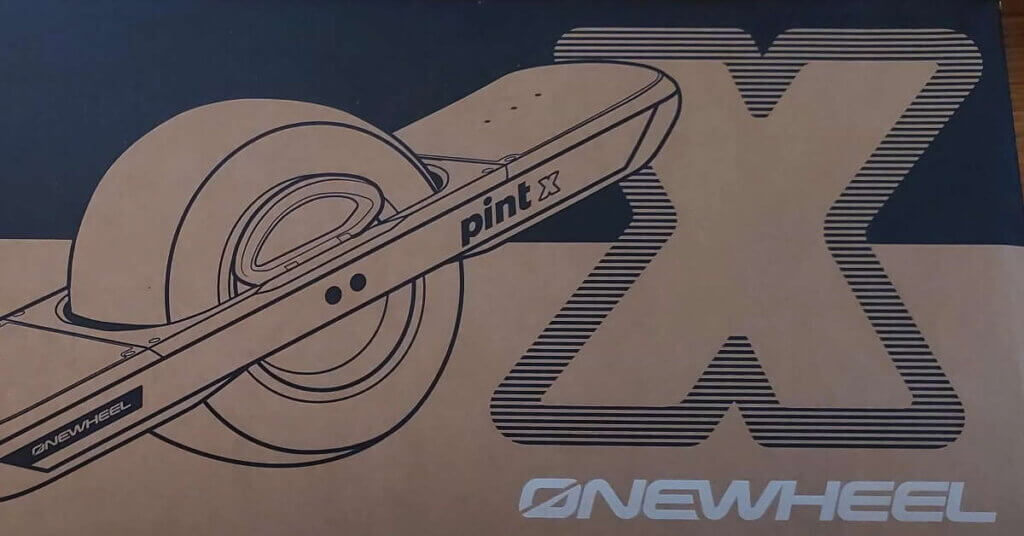Two major players determine if you can fly with your Onewheel Pint. It’s the TSA/ FAA with the rules governing what is allowed when flying and then it’s the rule of the individual airlines such as Delta, Southwest, United, Jet Blue. In short, the answer is
Yes, you can technically fly with the Onehweel Pint. The battery of the Pint is 147 Wh, less than the limits set by the FAA of <160 Wh. You need to declare it and must be carried as carry-on baggage. Keep in mind that the airline and TSA still have the right to deny you from flying with your Onewheel.
Please note that this post is related to TSA and FAA regulations only and not all individual airlines. Users have reported that TSA agents can and have stopped Onewheels that were within the allowed limits from flying.
What the guidelines say
The Onehweel Pint with its 147 Wh batter falls under the devices with larger lithium-ion batteries (101-160 watt-hours). Reading the guidelines TSA/FAA states that the airline is making the final decision. A key thing regarding the battery of the Onehweel Pint is that it’s an NMC (Nickel Manganese Cobalt Oxide) battery under 160 wh. NMC is a Lithium-ion class battery and its full name is Lithium Nickel Manganese Cobalt Oxide (LiNiMnCoO2). It’s still better to use the short name of NMC when talking to the agents. What’s governed by the regulations is the amount of active Lithium inside the battery, and the Onewheel Pint is below that for carry-on luggage.
With airline approval, devices can contain larger lithium-ion batteries (101-160 watt-hours per battery), but spares of this size are limited to two batteries in carry-on baggage only. This size covers the largest aftermarket extended-life laptop batteries and most lithium-ion batteries for professional-grade audio/visual equipment.
FAA.gov
The key is to be positive and provide relevant information to the TSA agents when questioned. I recommend having any documents printed out and handy if you need to show them to the agent.
When flying the main goal should be getting through TSA. Be prepared to answer any question and remember to show that this device isn’t specifically prohibited by the FAA and that it uses a safe NMC battery that is under 160 wh. Remember to tell them that you have researched the device to make sure it is within the FAA guidelines.
It is normal for the TSA agents to want to see the wattage on your battery to confirm that it’s within the limits. Flip the board over when asked and show them the watt-hour that is listed on the rail of your board. This will confirm that the Onewhell Pint lies within acceptable limits of the FAA. (Don’t have your floatplates on covering the rails).

*Note: some of the first Onehweel Pint was mislabeled stating 170 wh on the rails, this is a misprint and if you have one of these boards contact Future Motion Inc.
It’s a good idea to package your Onewheel in a duffle bag or something that completely covers the board. Since the airlines themselves aren’t checking what’s inside carry-on bags, they don’t have much influence on this process after you have passed the TSA.
This makes your life easier as you won’t need to rescan your items after you have passed the security check or if you are flying with a connecting flight.
Common questions and answers
- What type of battery does it have?
Its NMC battery - Does it list the watt-hours?
The watt-hours are 147 wh and visible on the label on the underside of the board - Is it fully charged?
It’s charged to 20% and I can show you that on my phone.
*Note: it’s a good idea to keep the battery below 30% SoC and have the Onewheel app installed to confirm that with your phone
*Deflate your wheel before flying, into space and it will make it easier in security.
There is still a risk where many airlines such as Delta, Southwest, United, Jet Blue, and others specifically call out “self-balancing boards” on their Restricted Items list. A way around this is to do like in the subsection below to disable the board and carry on the battery while the motor, rails, and controller are in the checked-in luggage.
Documentation
According to the Federal Aviation Administration (FAA), large lithium-ion batteries between 101-160 watt-hours are permitted “with airline approval.” (www.faa.gov)
According to the US Department of Transportation, “Lithium-Ion Battery, installed in a device (more than 100 but less than 160 watt-hours). Operator approval required” is permitted: (www.phmsa.dot.gov)

Can I take my Onewheel Pint on a plane?
You can take the Onehweel Pint onto a plane as carry-on baggage if the airline approves it. This is because the lithium batteries inside and governed by the TSA follow the FAA guidelines regarding flying. The airline is making the final decision and you need to understand that there is always a risk of getting denied from flying.
Can you check in an Onewheel Pint?
No, You definitely can’t travel with an Onewheel Pint as checked-in baggage, the lithium batteries are considered a dangerous item and can only be carried onboard.
Baggage equipped with lithium batteries must be carried as carry-on baggage unless the batteries are removed from the baggage. Removed batteries must be carried in accordance with the provision for spare batteries.
FAA
Disassemble the board before shipping
To increase the chances of success when flying with a Onehweel Pint many riders have had success and recommend you to remove the motor, rails, and controller to check it in separately. The idea is to make it so it doesn’t look like a “self-balancing device”.
Many airlines such as Delta, Southwest, United, Jet Blue, and more specifically call out “self-balancing boards” on their Restricted Items list.
Make sure to fully deflate the wheel before shipping and drain the battery to below 30% SoC (State of Charge)
The battery is then taken onto the plane as carry-on baggage. This works as the Pint battery is 147Wh and therefore below the allowable limit of 160Wh governed by FAA.
Spare (uninstalled) lithium ion and lithium metal batteries, including power banks and cell phone battery charging cases, must be carried in carry-on baggage only. When a carry-on bag is checked at the gate or at the planeside, all spare lithium batteries and power banks must be removed from the bag and kept with the passenger in the aircraft cabin. The battery terminals must be protected from short circuits.
(ii) For a lithium ion battery, the Watt-hour rating must not exceed 100 Wh. With the approval of the operator, portable electronic devices may contain lithium ion batteries exceeding 100 Wh, but not exceeding 160 Wh and no more than two individually protected lithium ion batteries each exceeding 100 Wh, but not exceeding 160 Wh, may be carried per person as spare batteries in carry-on baggage.
ECFR.gov
There could be another issue and that comes from the length of the Pint. The Pint is 27 inches long while many airlines limit the length of any carry-on baggage to 22 inches (9 inches x 14 inches x 22 inches (22 cm x 35 cm x 56 cm)).
If you can keep the rails in the checked-in baggage beside the motor. Disassembling the board is something commonly done in the electric skateboard community when riders are traveling with their boards on planes.
Rent a board instead of flying
If you are not feeling comfortable flying with your board another option is to rent a board. Today there are multiple options out there and if you want to see a list of providers check out Onewheel rentals in the USA. Most major cities have got a rental shop and more are popping up both in the US and around the world.
2020 IATA Lithium Battery Guidance: Transport of Lithium Metal and Lithium Ion Batteries (PDF)


